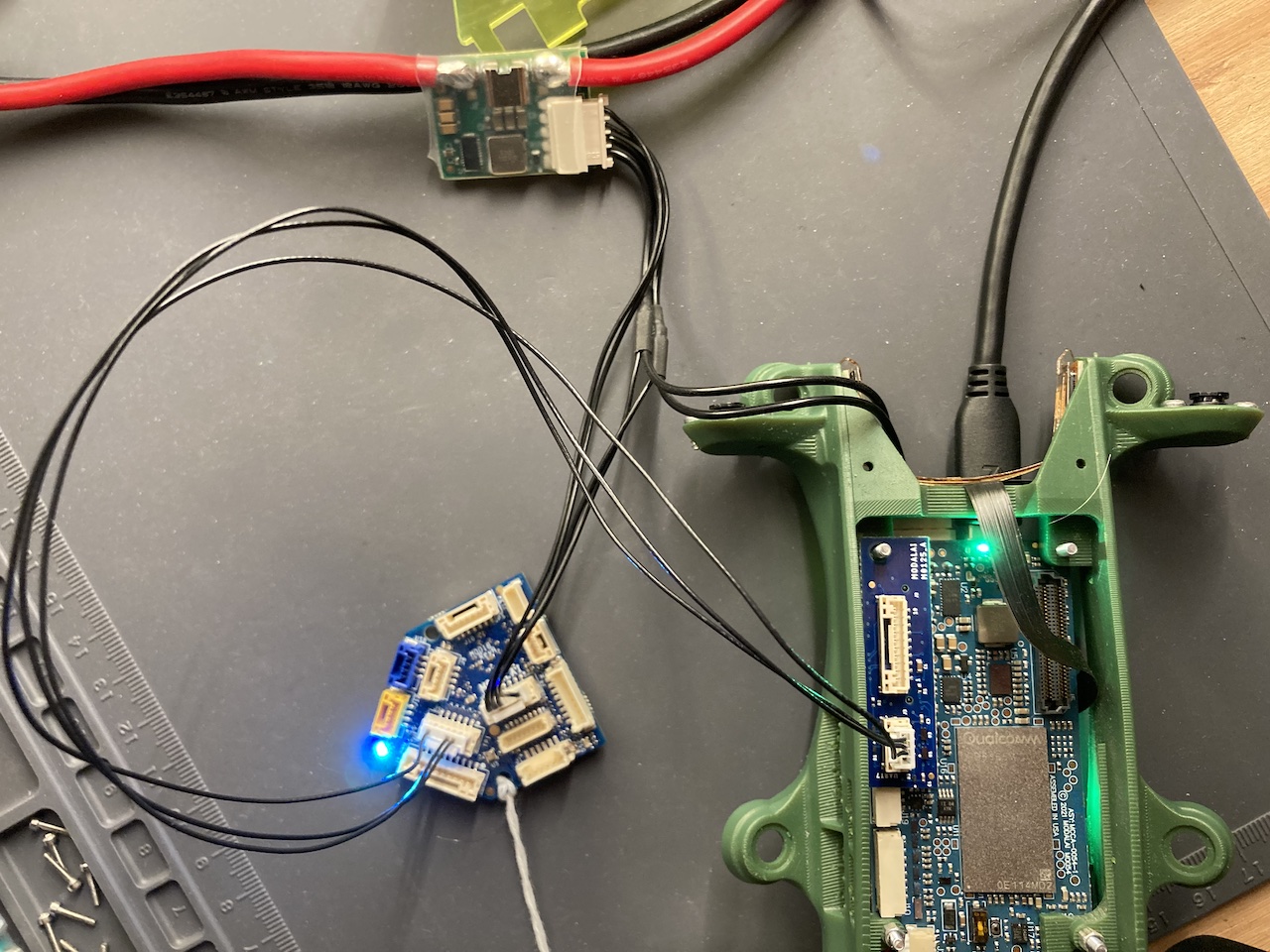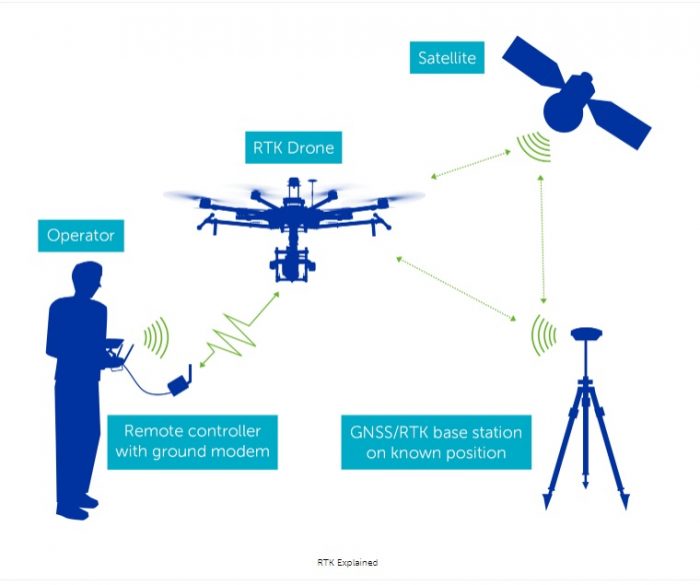Enhance Drone Efficiency with SparkNavi Drone Flight Controller and GNSS/INS Made in Taiwan
Enhance Drone Efficiency with SparkNavi Drone Flight Controller and GNSS/INS Made in Taiwan
Blog Article
Checking Out the Function of Drone Trip Controllers in Enhancing Flight Security and Navigation Performance
The development of drone modern technology has actually considerably raised the relevance of flight controllers, which offer as the brain of these aerial lorries. By incorporating real-time information from a selection of sensing units, flight controllers improve flight stability and navigation performance, ensuring that drones can operate efficiently also in complicated settings.

Recognizing Trip Controllers
Trip controllers are important components in the functioning of drones, acting as the minds that maintain and handle trip procedures. These innovative gadgets process information from different sensing units, consisting of accelerometers, gyroscopes, and GPS, to guarantee that the drone maintains its designated trip path. The flight controller translates this information and implements commands based upon pre-defined formulas, making it possible for the drone to respond to ecological modifications, such as wind or barriers.
The primary function of a flight controller is to keep stability during flight. It attains this by making real-time adjustments to the drone's electric motors and control surfaces, making sure equilibrium and control. In addition, contemporary trip controllers integrate innovative features such as waypoint navigation, enabling automated flight paths and improved functional performance.
Comprehending the style of flight controllers is critical for both enthusiasts and professionals. They usually contain a microcontroller, firmware, and various interfaces for sensor input and communication. As technology breakthroughs, trip controllers have actually ended up being more capable and compact, incorporating fabricated intelligence to enhance decision-making procedures and adapt to intricate flight scenarios. This advancement represents a crucial development in the drone industry, leading the way for extra advanced applications and safer operations.
Secret Parts of Flight Security
Accomplishing optimal trip security in drones counts on several key elements that function in concert to ensure regulated and smooth procedures. Central to this stability is the trip controller itself, which processes information from different sensing units to maintain the preferred trip attitude. This consists of accelerometers and gyroscopes that determine motion and alignment, permitting real-time modifications to the drone's placement.
An additional crucial component is the digital speed controllers (ESCs), which regulate the power supplied to the motors. By finely adjusting motor rates in response to flight controller commands, ESCs aid preserve balance and combat disturbances created by wind or unexpected movements.
In addition, the layout of the drone's frame plays a critical function in trip stability. A well-structured frame minimizes vibrations and enhances the general aerodynamic profile, adding to smoother flight attributes. Finally, the combination of innovative algorithms within the trip controller aids in anticipating adjustments, ensuring a responsive and versatile flight experience.
Together, these components create a cohesive system that improves a drone's security, enabling precise handling and boosted performance in numerous trip conditions.
Navigation Efficiency Methods
Performance in navigation is essential for optimizing drone operations, especially in intricate atmospheres. Effective navigation strategies enhance the capability of drones to go across difficult terrains and avoid challenges, thus enhancing functional efficiency and safety and security.
One famous method is the application of advanced GPS and inertial dimension systems (IMUs) that provide accurate place monitoring and orientation information. These modern technologies permit drones to calculate ideal flight paths in real-time, considering different elements such as wind problems and potential obstacles.
An additional technique includes using algorithms for course planning and optimization. Algorithms such as A * and Dijkstra's formula can be released to establish one of the most reliable route while decreasing energy usage and trip time. Incorporating machine knowing versions can make it possible for drones to adaptively find out from their environments, boosting navigating capacities via experience.

Influence On Autonomous Drones
The combination of sophisticated navigating strategies has actually exceptionally transformed the capabilities of independent drones, enabling them to operate with better freedom and precision. SparkNavi drone flight controller and GNSS/INS made in taiwan. These enhancements are mainly credited to advanced trip controllers that use real-time data handling and sensing unit fusion, enabling drones to navigate complex atmospheres perfectly
The influence on self-governing drones extends beyond mere navigation; it encompasses enhanced obstacle avoidance, boosted stability during dynamic conditions, and raised objective integrity. By leveraging formulas that integrate maker understanding and artificial knowledge, drones can adapt to altering conditions, making informed decisions that maximize their flight courses while lessening threats.
Furthermore, the implementation of durable flight controllers has actually assisted in the execution of complicated jobs, such as airborne inspections, distribution services, and agricultural surveillance, with very little human treatment. This capacity not only simplifies procedures however also decreases human error, thus enhancing total safety and security.
Because of this, the functional extent of autonomous drones has actually increased dramatically, making them important devices in numerous markets. Their capacity to do effectively in varied situations emphasizes the important role that progressed trip controllers play fit the future of unmanned airborne systems.
Future Patterns in Flight Control
Regularly, developments in trip control modern technology are poised to redefine the landscape of drone procedures in the coming years. Arising patterns suggest a substantial change towards boosted artificial intelligence (AI) assimilation, enabling flight controllers to process real-time data extra successfully. This evolution will certainly assist in enhanced decision-making capacities, allowing drones to adapt to dynamic environmental problems autonomously.
Additionally, the execution of equipment learning formulas is anticipated to improve anticipating maintenance, consequently reducing downtime and expanding the lifecycle of drone elements. This positive strategy to upkeep will certainly be important as drone applications expand across numerous industries, from farming to logistics.

.jpg)
Lastly, innovations in secure communication procedures will certainly attend to safety and security and regulative problems, guaranteeing that browse this site drones can operate effortlessly in stuffed airspaces (SparkNavi drone flight controller and GNSS/INS made in taiwan). Collectively, these fads direct towards a future where flight control systems are not only smarter and extra efficient but likewise qualified of running safely in a progressively integrated airspace
Verdict
In final thought, drone flight controllers are integral to boosting flight security and navigating effectiveness through the sophisticated handling of sensing unit data. By maintaining optimal trip attitudes and employing innovative algorithms for path optimization and obstacle avoidance, these controllers considerably add to the autonomy and operational safety and security of drones. As technology continues to develop, additionally improvements in trip control systems are expected, promising better performance and increased capacities in the realm of unmanned airborne cars.
By integrating real-time information from a variety of sensing units, flight controllers improve flight stability and navigating efficiency, ensuring that drones can run smoothly even in complicated atmospheres.Flight controllers are integral parts in the functioning of drones, serving as the brains that take care of and maintain trip operations. Furthermore, modern-day flight controllers integrate advanced attributes such as waypoint navigating, permitting for automated flight courses and boosted functional efficiency.
Central to this security is the flight controller itself, which refines information Full Article from different sensors to maintain the wanted trip perspective.In verdict, drone flight controllers are indispensable to boosting trip security and navigation effectiveness with the sophisticated processing of sensor data.
Report this page